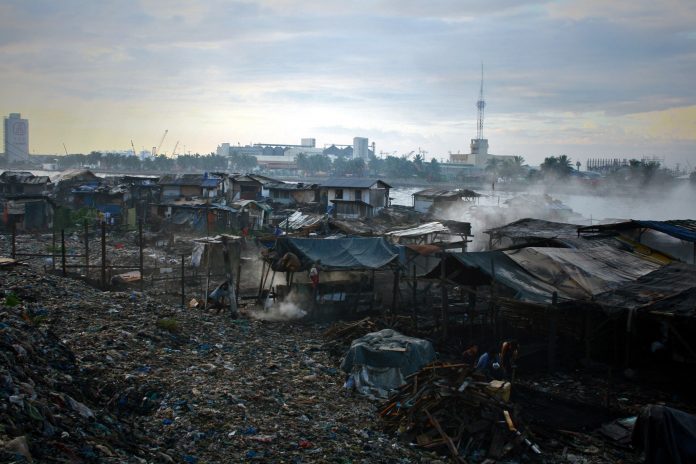What is clear from our experience with the COVID-19 pandemic is this: it has had the heaviest impact on the lives of people living in deprivation or facing difficult socio-economic circumstances.
Even before the coronavirus outbreak, Pope Francis had sounded the alarm on pervasive social injustice and economic inequality across the globe.
“A political-economic system, for its healthy development, needs to guarantee that democracy is not only nominal, but that it can be expressed in concrete actions that watch over the dignity of all its inhabitants under the logic of the common good, in a call to solidarity and a preferential option for the poor,” he told a gathering of judges in the Vatican in May last year.
The pope pointed out that States “must not renounce their most exalted and primary function: to look after the well-being of their people” and promote social justice, especially in the “defense or prioritization of social rights above other kinds of interests.”
In the Philippines, more than a quarter of the population of 108 million lives below the poverty line. In fact, we have the highest rate of economic and social inequality in Southeast Asia.
This problem is not limited to personal wealth. Land distribution, educational and vocational opportunities and basic welfare programs are also affected by the growing disparity between the richest and poorest Filipinos.
The inequality in gross regional domestic product (GRDP) per capita, or the average income of people in a region, has widened from 2009 to 2018, according to data from the Philippine Statistics Authority.
The richest among all regions is the National Capital Region (NCR), where the GRDP per capita as of 2018 stood at P253,893, a 40 percent jump from P181,748 in 2009.
The poorest is the former Autonomous Region in Muslim Mindanao (ARMM), now replaced by the Bangsamoro Autonomous Region (BAR), with its GDP per capita barely improving from P14,052 in 2009 to P14,657 in 2018.
The regions with very low GRDP per capita are also the regions with large agricultural bases. The government has to give greater focus to improving the productivity of agriculture and fisheries in the regions.
This requires helping small farmers and fisherfolk integrate with agri-business, apart from farm diversification, which will help farmers plant commodities with higher value and market potential.

Within regions, Eastern Visayas and Central Visayas recorded the highest income inequality.
As economic inequality has become more pronounced in the past decade, this has led to geographical disparity.
In Mindanao, the southernmost and second largest of the islands in the country, six of the 10 regions are among the top 10 in terms of national poverty rates, with between 25 and 40 percent of families living in abject poverty.
Nationwide, the 30 most deprived provinces are home to more than one-third of the Philippines’ poorest families, resulting in generational poverty that makes it difficult for them to overcome.
What should be done?
The government has to increase efforts in accelerating regional and rural development. It must also improve connectivity across regions and enhance the efficiency of transport, communications, and logistics networks.
Aside from improving connectivity, the National Economic and Development Authority (NEDA) recommends several measures to boost economic growth in the regions: improve agricultural productivity, efficiency, and income, especially among small farmers; strengthen efforts to enhance the competitiveness of local industries, particularly small and medium enterprises; improve access to social services, especially in rural areas; and strengthen resilience against natural and man-made disasters and risks.
Economic and social inequality are complex problems, but they can be addressed by the government, the private sector, civil society groups and humanitarian organizations working together to ensure that there are readily available opportunities for the poorest people in the country.
Ernesto M. Hilario writes on political and social justice issues for various publications in the Philippines. The views and opinions expressed in this article are those of the author and do not necessarily reflect the official editorial position of LiCAS.news.









